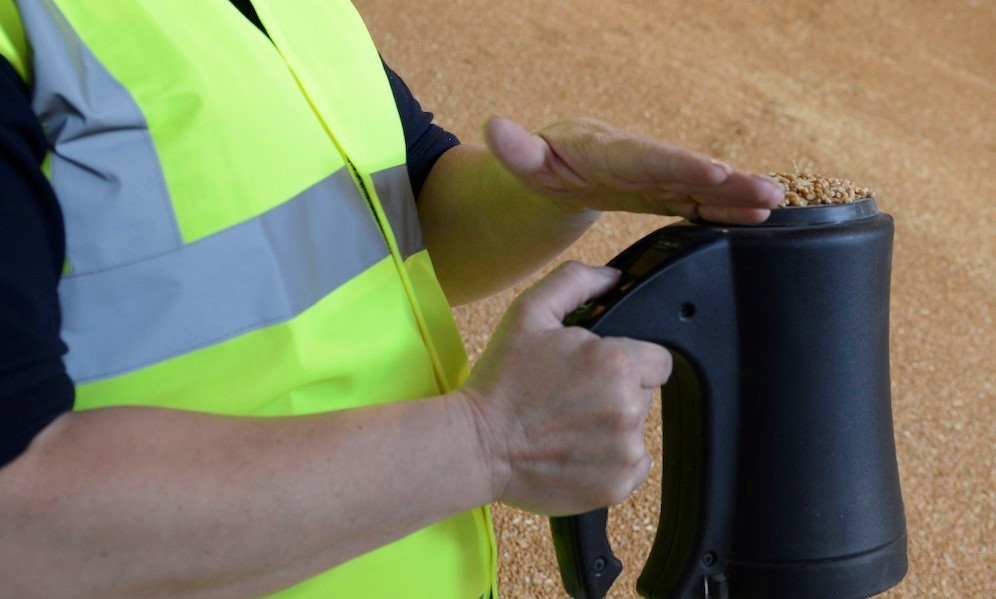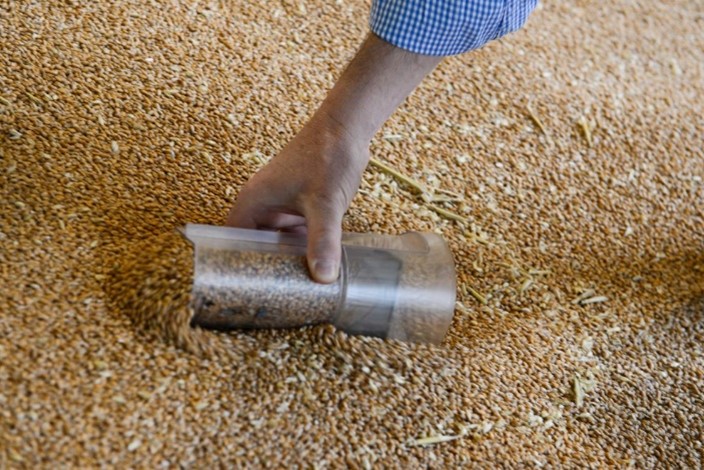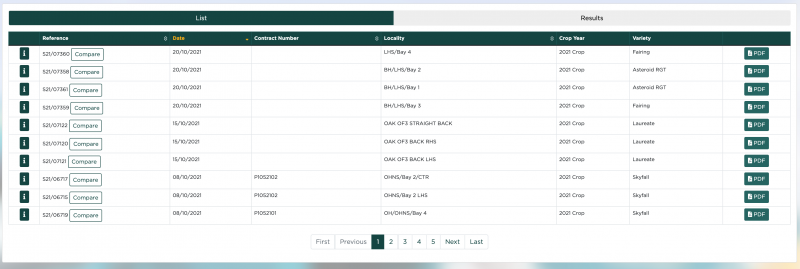Use your grain sampling data to plan the next cropping year
To be frank, a sample bag of grain doesn't really tend to excite many of us. Why would it? It's just a sample, it's minute in comparison to the hard graft that's come before it.
But then – if we really think about it – doesn't that make it quite a significant thing?
That bag of grain represents at least a year of hard work; significant investments, the challenges you've overcome and the opportunities you've taken. When you consider the efforts that have gone into creating that bag of grain you realise that, if we are to be completely honest, it all comes down to that bag. The fact is that it isn't just grain in there. It's information, data, learnings, it's proof of things that worked well and sometimes things that didn't.
If you think about it like that, you might look at your next full sample bag quite differently.
The value in grain sampling
First and foremost, it's important to know that grain sampling is not expensive and it has many benefits. The more data you collect and log from your grain, the more the data will be of greater value moving forward. My advice is that you shouldn't view the results as being worthless once your grain has left your farm because it gives you an irreplaceable view on your business performance, thereby helping you to identify the areas that are doing well or which need tweaking.
The old adage: "If you can measure it, you can manage it" may feel like a cliché but it's as true now as it has ever been. By sampling your grain, you can easily acquire information and data. That information and data can be easy to access, view and scrutinise with digital solutions such as our MyFarm platform.
Getting into the detail and making it work for you
Everyone with a Frontier account has free access to MyFarm. In it, you can see the results of every grain sample for your farm business that we have analysed, every lorry load we have sampled and every load where we have been provided with the test results.
This information has never been so accessible and you certainly don't have to be a 'tech whiz' to find it and use it. You can learn more about how to see your grain sample data in MyFarm by reading this earlier blog I wrote.
Why is having access to grain sampling data so important?
A grain sample represents data which can be of significant use to you. It is the result, the primary output, the 'check and balance' of what has gone right or wrong over a particular cropping year. Of course, it's understandable that a lot of the results can be out of a farmers' control due to weather conditions and other external factors. However, there are certain things that can be influenced – provided you know how you want to influence them. It's important to regularly review, fine-tune, alter and challenge your decisions and grain sampling is a great way to accomplish this.
A question to consider when analysing grain sample results is: What do I know about my crop outputs from previous years that could inform next spring's management decisions? Frontier's national crop nutrition technical manager, Edward Downing has some great pointers in this blog, which prompts you to think about whether you should change your fertiliser programme to better suit your crop. This can be really important, as supply chains are now often asked questions about the use of inorganic inputs, carbon footprints and even required to demonstrate commitments to sustainable farming practices.
Reflecting on historic grain sampling data not only allows you to stay informed of your general fertiliser programmes, it also allows you to better understand how best to adjust nitrogen application rates for future crops. In his most recent blog on the value of nitrogen, Edward explains how you can tailor your application rates to crop potential and your specific situation.
What are some of the learnings you can get from your grain sampling data?
Grain sampling will help you gauge an understanding of how well you're meeting the markets you intend to grow for. It also gives you insights on how well you're blending and mixing loads to meet contract specifications, thereby keeping claims to a minimum. MyFarm can be a great aid to this as it has many functions that inform you of the grain analysis of every load, inevitably allowing you to keep track of real-time end destinations.
Another benefit with MyFarm is that your data is not just accessible during the season it is most relevant. Additionally, it stores all your grain sampling data over the years, making it available for comparison so that you can review any differences in analysis and in conjunction with the type of management each crop received.
How to safely and efficiently collect grain samples on farm
It is vital to sample your grain to ensure you have a sound understanding of what is in your store and how best to market it. The challenge in grain sampling, however, is to obtain a representative sample that will accurately reflect the characteristics of the whole bulk.
Watch our guidance videos to keep informed about the importance of safely collecting grain samples yourself and the best method for doing so.
Grain quality analysis service available in the future
Recently, Frontier and SOYL precision have piloted a service for growers to conduct broad spectrum grain analysis from individual fields. Slightly different to the usual way of grain sampling, the broad spectrum analyses examine grain on a field-by-field basis from a nutritional point of view. The results help to inform growers about the management of their crop and demonstrates that nutrition management learnings from the year prior can help with the season ahead. The trial is still in its early stages but more information about the service will be covered in the March issue of our AGRONOMY publication, as well in upcoming blogs. To receive notifications each time we post, you can subscribe to our blog here.
The power of data
Next time you look to take some grain samples, think about the powerful information at your fingertips through MyFarm and how it can support your business performance in the future.
For more information on how grain sampling can help you market grain in the year ahead, you can read this blog. Alternatively, if you would like to know more about MyFarm and how it can help you, your team and your business, then reach out to our digital farm support team by calling 03330 141141 or emailing This email address is being protected from spambots. You need JavaScript enabled to view it.
As a subscriber, you’ll receive email alerts each time a new blog is published so you can always stay updated with the latest advice and insights from our experts








Comments